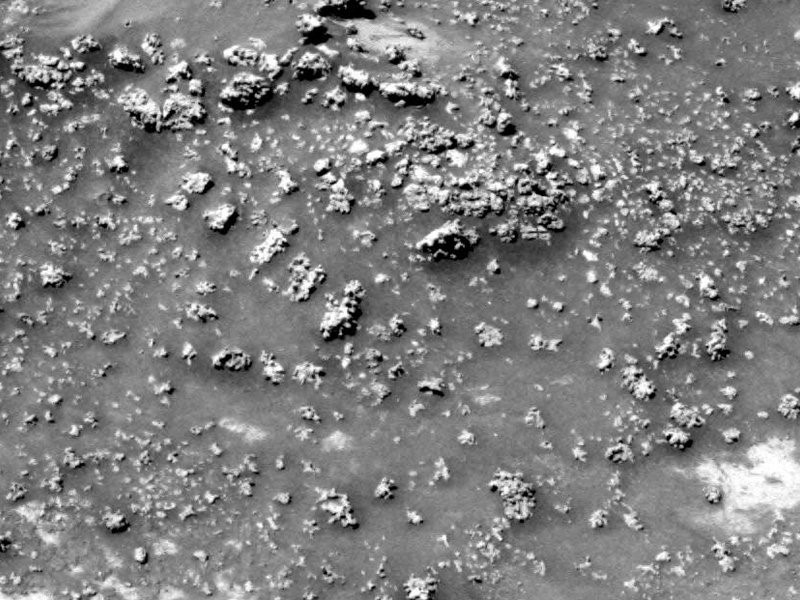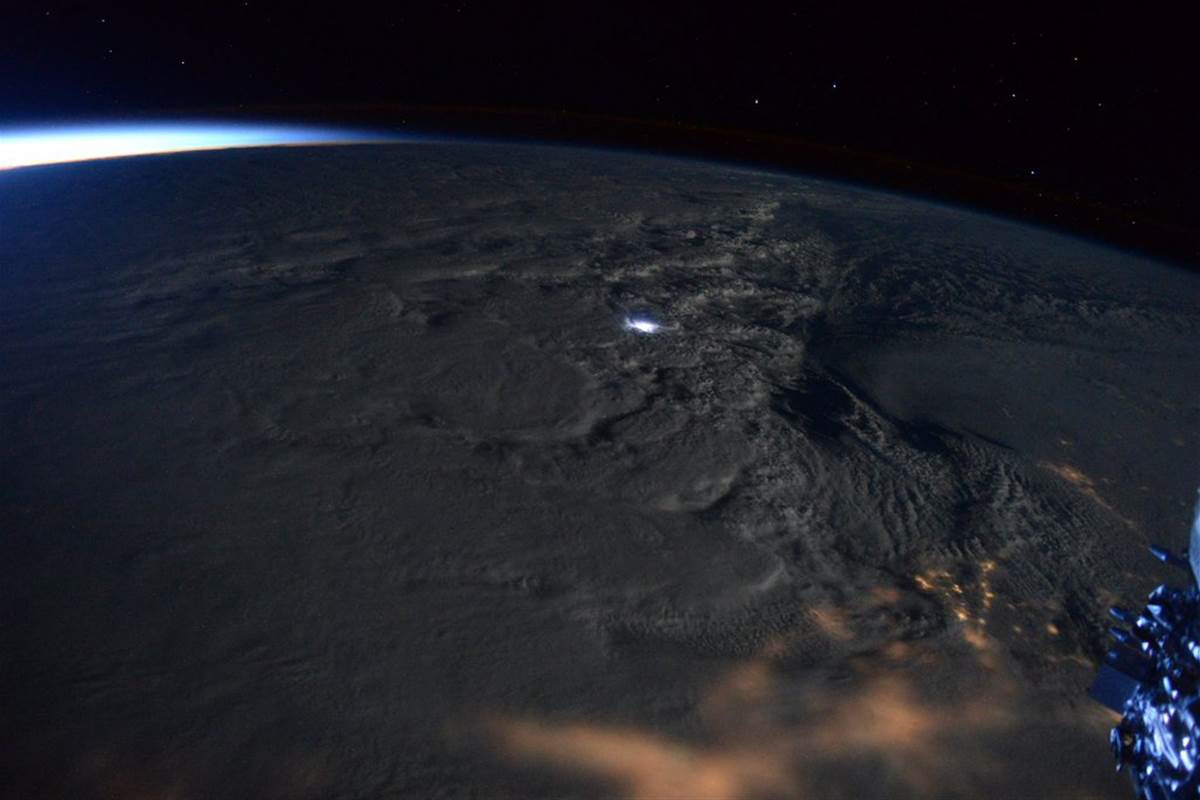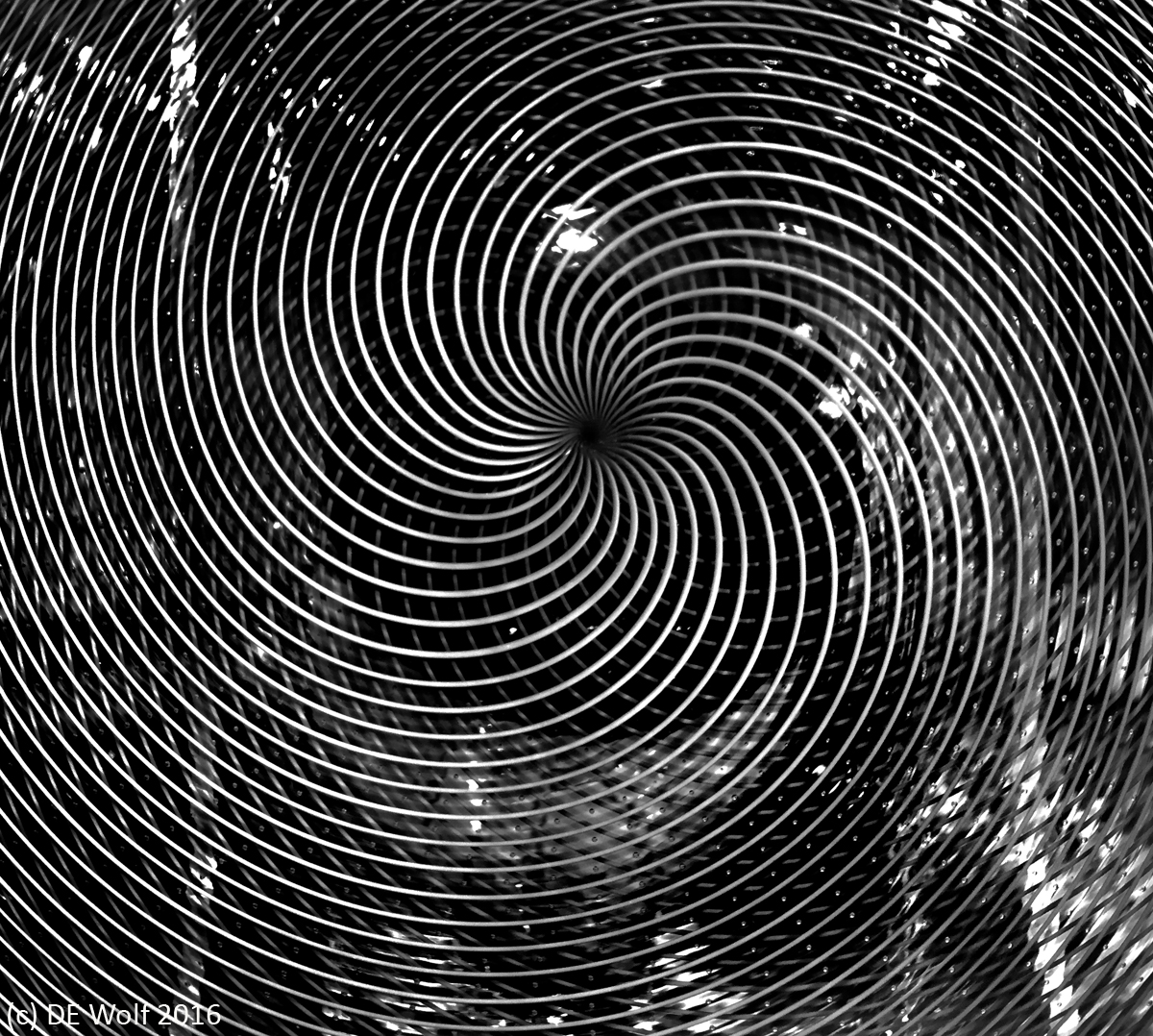
Figure 1 – Signs of life on Mars? Martian mineral deposits taken by Spirit near Home Plate shows silica formations poking out of the soil, which may have been formed by microbial life. (NASA/JPL-Caltech and in the public domain.)
In 2008, NASA scientists announced that NASA’s Spirit rover had discovered opaline silica deposits inside Mars’ Gusev crater. Significantly the outer layers were covered with in tiny nodules that resembled the heads of sprouting cauliflower. Merely of aesthetic and scientific interest?
It is a very curious point of ambiguity that the image of Figure 1 may, in fact, be the first definitive demonstration or evidence of life on Mars. Recent discoveries in a Chilean desert by Arizona State University at Tempe scientists, Steven Ruff and Jack Farmer, presented at the American Geophysical Union this past December, has led them to hypothesize that these silica structures may have been created by microbes.
The ambiguity may take a very long time to resolve. But recognize that obtaining microorganisms from another planet would have very profound significance. Do they have DNA? Is it composed of the same nucleic acids? Do the same triads of nucleic acids code for the same amino acid? The questions of similarity and dissimilarity have profound implications of the commonality of life in the universe.
But for now we still do not even know if these structures are caused by microorganisms. We do not know if Figure 1 is our first tentative look at extraterrestrial life.







